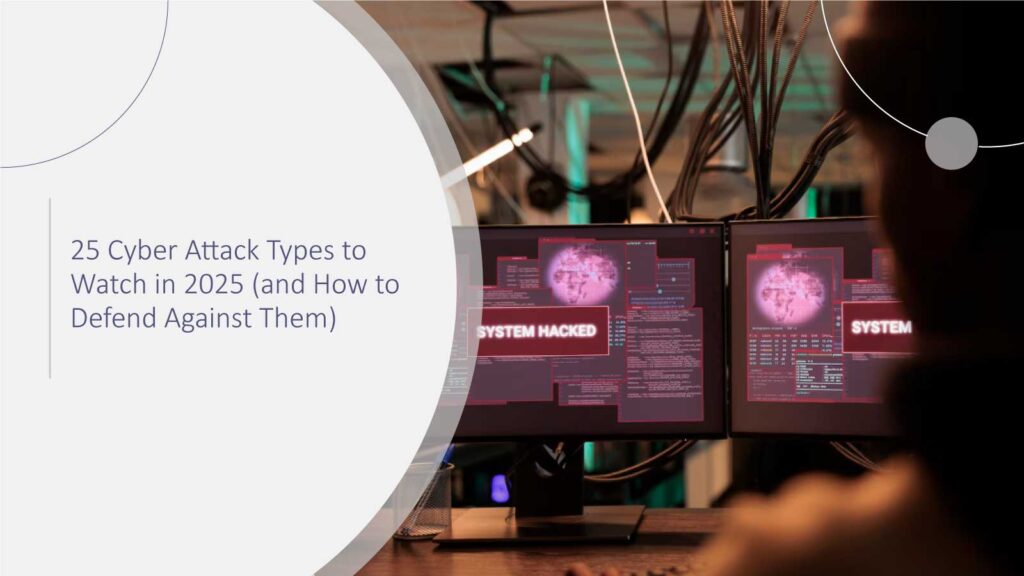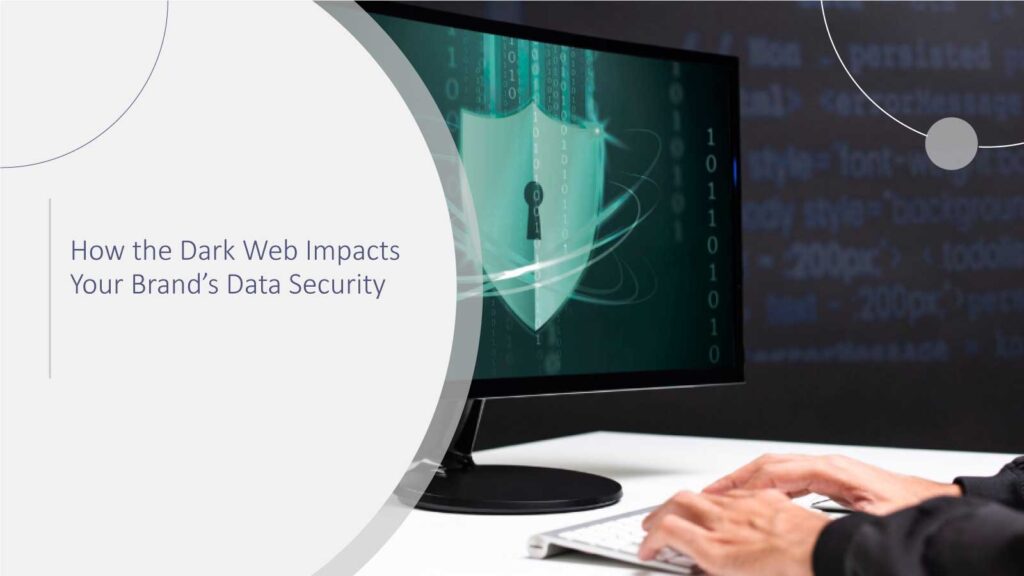Introduction – The Rising Stakes in 2025
Consider a scenario such as this: you get to your workplace, check your inbox, and there it is—an email apparently from your CEO asking you to transfer money. The email highlights the correct name, signature, and even the tone of the writing, and yet it is a cyber attack in the form of a spear-phishing con. These sorts of attacks are becoming increasingly sophisticated and elaborate. In 2025, cyber threats will blend technology, psychology, and opportunity more than ever before, challenging organizations to anticipate attacks rather than merely react to them.
Defenders are struggling in the face of adversaries who are employing a mix of traditional tricks and AI, targeting identity and misconfigured cloud to find vulnerabilities, and unsealing supply-chain blind spots to use in their attack, across industries. Reacting, you cannot defend; anticipating, you must. What I am doing right here I am taking you through 25 different ways of attacks that are expected to be the most prevalent in the threat landscape this year, together with the practical defenses you can immediately turn into actions.
By 2025, 90% of cloud breaches will involve misconfigured identities,” – Gartner.
Key takeaways you should remember:
- Identity is the gateway: The majority of attacks are the result of compromised credentials or inadequate access control.
- Preparation beats panic: Good backups, well-defined playbooks, and incident drills do make a difference.
- Human awareness remains central: The technology could be as advanced as you want, but one misclick or one unverified call can wipe out your defenses. Let’s start.
Below are the 25 Cyber Attack Types:
1. Phishing
What it is: Phishing is basically fake emails that trick people into giving their passwords or clicking on harmful links.
Defense: Train your employees, use a strong email filtering system, and set up multifactor authentication (MFA).
2. Spear Phishing
What it is: A singled-out phishing attack that targets top executives or the finance department is known as spear phishing. Learn more about how it is different from phishing.
Defense: Make the top executives aware of security issues and always verify by contacting the person directly in case of any unusual request.
3. Smishing & Vishing
What it is: Social engineering methods like SMS (smishing) or phone calls (vishing).
Defense: Employees should be trained to never give out codes or passwords to anyone on the phone or by text; get mobile threat protection.
4. AI-Powered Deepfake Attacks
What it is: Created voices or videos that pretend to be someone you can trust. Deepfake attacks use AI-generated audio or video to impersonate trusted individuals, tricking victims and requiring verification through multiple communication channels.
Defense: Verify the odd request through a different communication channel; use call-back procedures.
Nearly 70% of fraud-prone industries faced AI-driven impersonation attempts” – McKinsey Digital Trust Survey 2024.
5. Malware
What it is: Malicious software, worms, trojans, and spyware that are sent through emails, USBs, or downloads.
Defense: Update your endpoint protection regularly; do not allow dangerous file types; patch your system immediately.
6. Ransomware
What it is: It takes over your files and asks for money in return for the release key. Ransomware is malicious software that locks or encrypts your data and then demands payment (often in cryptocurrency) to restore access.
Defense: Have offline and unchangeable backups; always do the recovery practice.
7. Double/Triple Extortion Ransomware
What it is: In addition to stealing the files, the attackers also release them or threaten with DDoS.
Defense: Separate networks and watch the places where data transfers are possible.
8. Cloud Attacks
What it is: Exploiting poor setups, weak identity controls, or stolen API keys.
Defense: Always work with the lowest level of access, change keys regularly, and use cloud posture management tools. Cloud attacks exploit misconfigurations, weak identity controls, and stolen API keys, turning the very convenience of the cloud into a prime entry point for attackers.”
9. Insider Threats
What it is: Employees or contractors who deliberately or by mistake reveal or misuse access.
Defense: Practice the least privilege possible, keep track of all activities, especially the risky ones, and create a culture where people are comfortable reporting.
10. Zero-Day Exploits
What it is: Attacks on software vulnerabilities for which no fix has been created yet.
Defense: Use virtual patching, behavior-based intrusion detection, and fast patch rollout after updates come.
11. Supply Chain Attacks
What it is: The suppliers, updates, or third-party software get hacked. Supply chain attacks compromise third-party vendors or software updates to infiltrate target organizations, making strong vendor security and software bill-of-materials (SBOM) oversight essential.
Defense: Require SBOMs, perform vendor audits, and limit third-party access.
12. Man-in-the-Middle (MitM) Attacks
What it is: Intercepting or altering the data flow between two systems. Man-in-the-Middle (MitM) attacks secretly intercept and alter data transmitted between two parties, making end-to-end encryption, VPNs, and certificate pinning critical defenses.
Defense: Always use TLS encryption for the entire process, VPNs for untrustworthy networks, and certificate pinning.
13. DNS Spoofing/Poisoning
What it is: Hackers change the DNS records so that users are redirected to their websites. Spoofing attacks involve impersonating a trusted source, such as email addresses, websites, or DNS records, to trick users or systems, requiring authentication checks and DNSSEC or anti-spoofing measures to defend.
Defense: Employ DNSSEC and remain vigilant for unapproved changes.
14. Credential Stuffing
What it is: The attackers gather lists of stolen passwords and use them to log into various accounts.
Defense: Make different passwords and MFA mandatory; be on the lookout for multiple login attempts.
15. Brute Force Attacks
What it is: The attackers keep trying to guess your password until they get it right.
Defense: Limit the number of logins allowed within a certain time frame; after several failed attempts, the account is temporarily locked; and use MFA.
16. SQL Injection (SQLi)
What it is: Hackers insert malicious code into a database through queries.
Defense: Construct queries only with parameters and thoroughly validate inputs.
17. Cross-Site Scripting (XSS)
What it is: Hackers inject malicious scripts into web applications.
Defense: Properly encode all user inputs to prevent malicious scripts from executing; implement content security policies.
18. Drive-by Downloads
What it is: The installation of malware without the user’s knowledge when they visit a compromised site.
Defense: Make sure that browsers and plugins are always updated; use web filtering.
19. Living-Off-the-Land Attacks
What it is: The criminals just do exactly what the administrators do to escape quietly from the radar.
Defense: Keep track of script execution and only allow certain accounts to use admin tools.
20. Distributed Denial-of-Service (DDoS)
What it is: DDoS is a method of flooding servers or networks with enormous amounts of traffic to exhaust them. DDoS attacks overwhelm networks or servers with massive traffic, disrupting operations, and can be mitigated with traffic filtering, rate limiting, and DDoS protection services.
Defense: Apply DDoS mitigation services and increase capacity ahead of time.
21. Password Spraying
What it is: Using a few simple passwords to try and gain access to a large number of accounts in such a way as not to cause account lockouts.
Defense: Restrict weak passwords, implement MFA, and watch login patterns.
22. OT/ICS Attacks
What it is: Malicious activities concentrated on industrial or critical infrastructure systems.
Defense: Separate the OT from the IT, patch the systems with caution, and limit access from the remote side.
23. Mobile Exploits
What it is: The hacking of Android/iOS devices and apps.
Defense: Update applications, stop the side-loading of apps, and use mobile device management (MDM).
24. IoT Attacks
What it is: Taking advantage of the loopholes in connected devices such as cameras or sensors. IoT security focuses on protecting connected devices like cameras, sensors, and smart systems from exploitation, emphasizing device inventory, credential management, network segmentation, and regular firmware updates.
Defense: Keep track of all the devices, reset the credentials, and run the IoT network separately.
25. Session Hijacking
What it is: Illegally accessing an active user session in a web application or website.
Defense: Implement secure cookies, so
Why These Attacks Matter in 2025
The trends are supported by security reports. DBIR 2024 by Verizon indicates social engineering, along with system intrusion, as the most common causes of breaches. In Sophos’s State of Ransomware, it is pointed out that more and more victims are the targets of double or triple extortion. The supply chain compromises have increased from ~9% of breaches in 2023 to ~15% in 2024. Credential theft has increased to such an extent that it has gone up by more than 150% in some industries.
Such things do not happen once; they are simply patterns. The things leading to identity hygiene, cloud posture, vendor management, and consistent incident response to be at the top of the list of our priorities are exactly these patterns.
As per McKinsey, Organizations spent approximately. US$200 billion on cybersecurity products & services in 2024 (up from ~$140B in 2020).
Constructing a Defense Posture of the Twenty-first Century
It is not possible to do all the things at the same time, but you can take the first step from where it matters most:
- Identity and access control: Turn on MFA for all, assess privileged accounts, implement zero-trust.
- Visibility: Gather logs and identify irregularities throughout the cloud, endpoints, and applications.
- Resilience: Immutable backups are casually kept offline and disaster recovery tested.
- Human training: The phishing and smishing attack simulation is to be specially oriented for executives.
- Vendor oversight: Always request SBOMs and perform your own audit of the third parties from time to time.
By these measures alone, you limit your attack surface significantly for most attack kinds.
According to Microsoft Security, organizations with MFA reduce credential-based breaches by 99%”.
Conclusion: Shrink the Attack Surface Before It Shrinks You
The variety of attacks is not optional. Threat vectors are constantly evolving and include identity, cloud, insiders, supply chains, and AI-driven deception. The defensive stance has to be multi-layered technical measures, human verification, and incident role-playing.
Only three improvements made this quarter will provide a risk-mitigated impact that is more than enough across the 25 attack types listed above: (1) universal MFA and identity clean-up; (2) backup verification with disaster recovery rehearsal, and (3) strict vendor oversight.
FAQs
Q1: Why are phishing and credential theft still effective in 2025?
Because they take advantage of human behavior and password reuse. Even the strongest technology cannot prevent someone from clicking on a very convincing phishing email or using the same credentials in another place.
Q2: Are deepfakes really a big threat or just hype?
They are the truth. Deepfake audio/video tools have reached the stage of being used for easy impersonation, especially in sectors with high fraud risk.
Q3: How often should I test backups and recovery plans?
Once a quarter for essential systems, twice a year for the total recovery exercise. Have a simulated ransomware attack along with an extortion scenario.
Q4: What is an SBO, M, and why does it matter for supply chain defense?
A software bill of materials is like a list of all the components of code. It gives information about whether or not your systems are utilizing libraries that are susceptible to an attack k even the ones that are in third-party software.
Q5: For limited resources, which attacks should I prioritize defending against?
Spear phishing, credential theft, cloud misconfigurations, and ransomware are four of the most critical attack vectors that should be on top of your list. These types are common across almost all industries; therefore, by shutting them down, you get maximum risk reduction.
For deeper insights on agentic AI governance, identity controls, and real‑world breach data, visit Cyber Tech Insights.
To participate in upcoming interviews, please reach out to our CyberTech Media Room at sudipto@intentamplify.com.




